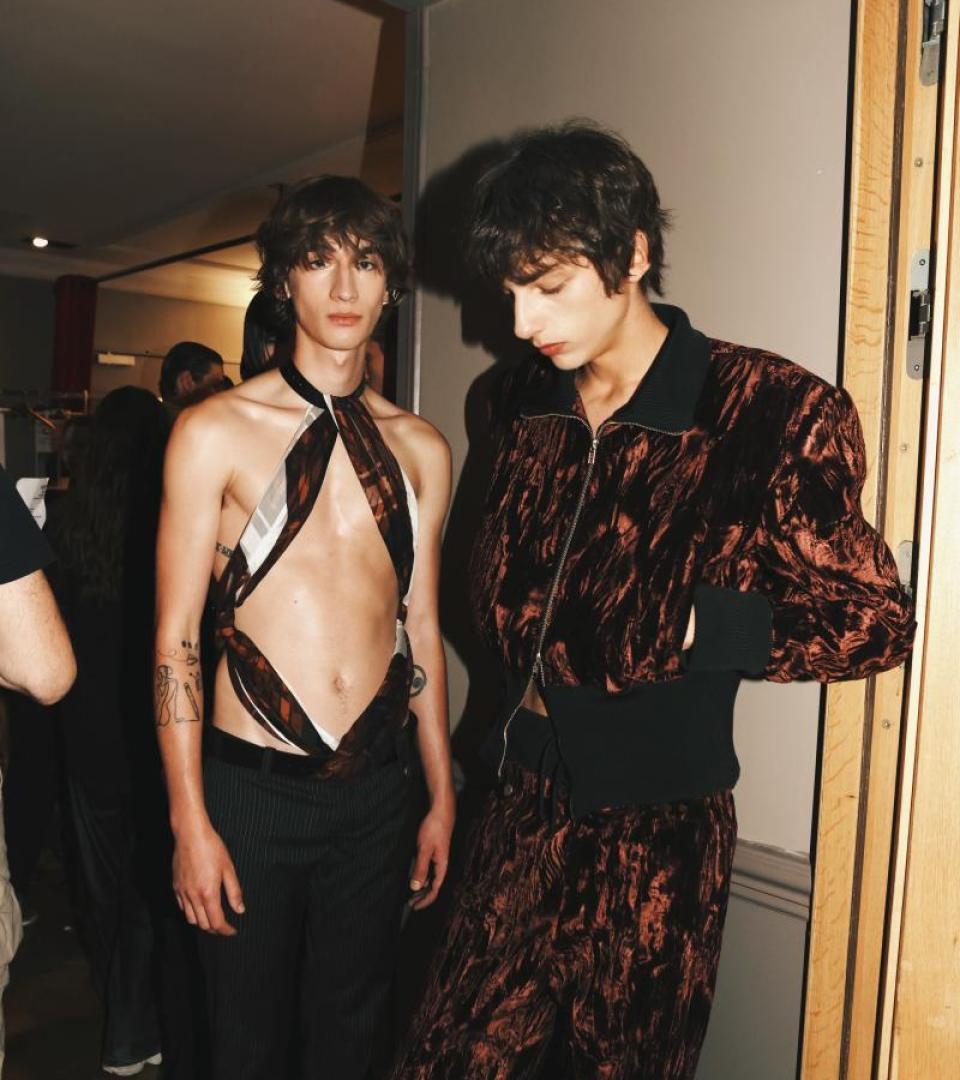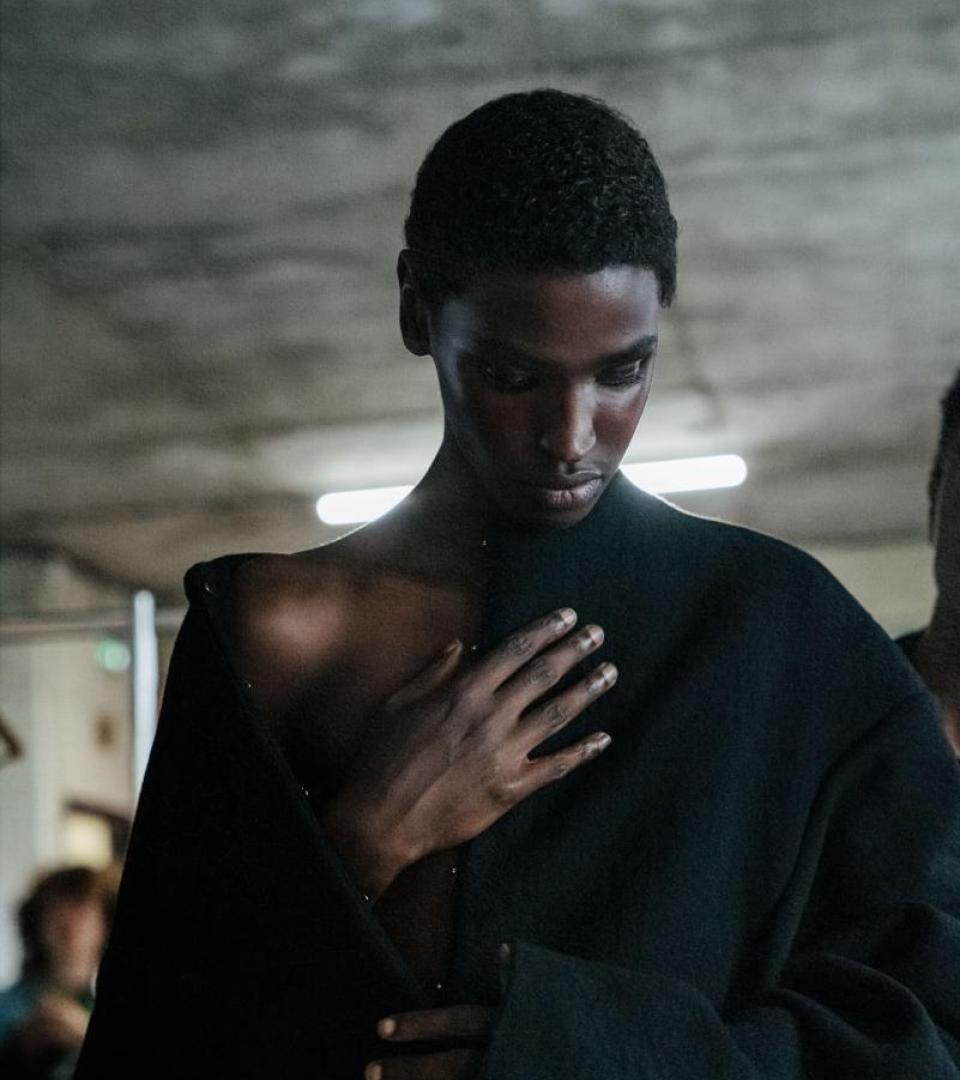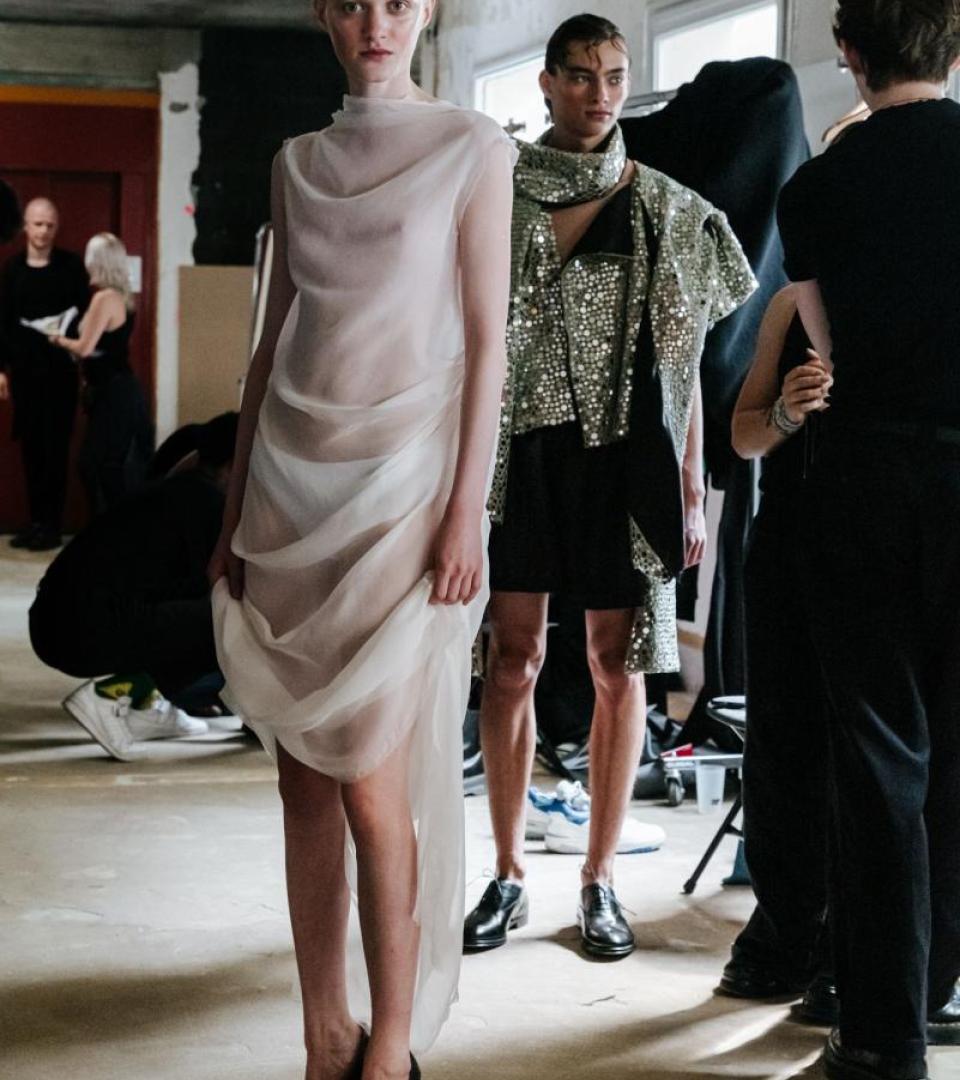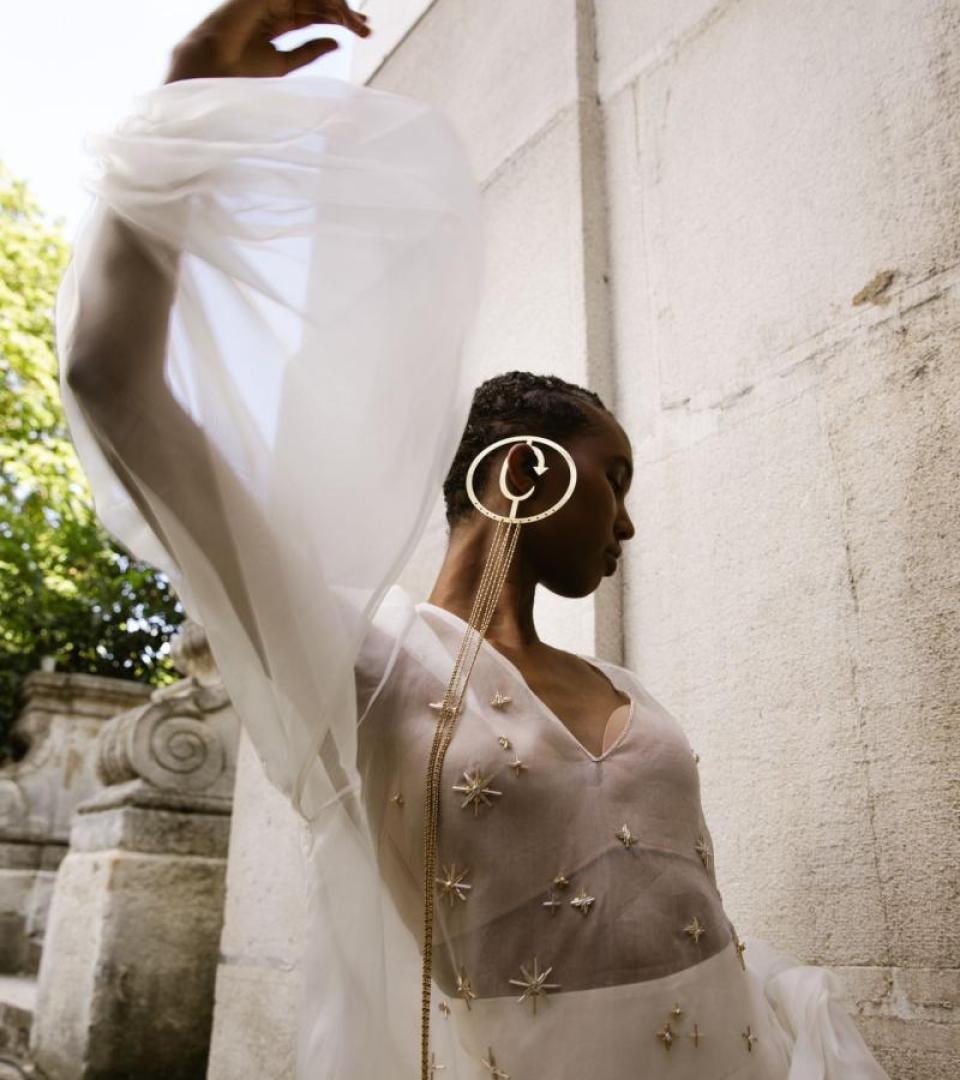P. Andrade's Earthly Desire
By Paul McLauchlan
As the first Brazilian brand ever to be featured on the official menswear calendar, P. Andrade designers Pedro Andrade and Paula Kim wanted the Spring-Summer 2026 collection to reflect their homeland through a different lens. The husband-and-wife duo sidestepped stereotypes like carnival, beaches, and soccer; instead emphasising art, design, and science. Entitled ‘The Tree is Your Spine,’, they reiterated their stance as a utilitarian menswear brand in an earthy colour palette that reflected the country’s rich biodiversity. From there, they spun traditional lace in patterns that resembled bacterial shapes and technical fabrics that spawned futuristic forms.
With a new perspective of Brazil in mind, they recruited visual artist Samuel de Sabóia to design patterns that reflect biodiversity, microorganisms like fungi and bacteria. Motivated by the objective of designing a more sustainable future for the fashion industry, they combined their design principles with the technical prowess of Micheline Maia Teixeira, a textile engineer developed smart textiles embedded with binary codes readable by a QR code, providing full transparency into the garment’s supply chain. They enrolled scientist Ailton Pereira to produce biological dyeing techniques that produce no toxic waste. He used native bacteria and fungi to create a palette of mostly earthy tones like beige, brown, pale green, and purple.
With their other collaborators﹣Levi’s on naturally-dyed denim, Oakley on sunglasses, and Puma on footwear﹣Andrade and Kim initiated a dialogue about the future of sustainable fashion between their independent label and global brands who can help them make meaningful change in the industry.
“We want to show Brazil in a non-obvious way,” said Andrade, on a call from Sao Paulo, with Kim.
What would you like us to know about the collection?
Pedro Andrade: It’s based on the pillars of Brazilian innovation and the regenerative economy. We started with the Kundalini concept of yoga, which is about the creation of the world, and relating this to science. We were thinking about the heritage of our culture but working with new technologies – looking into the future, through the past.
Paula Kim: When you think about Brazil, you don’t talk about indigenous techniques like lace, dyeing techniques. We wanted to translate these into the design without being too literal.
How does working with fashion collaborators compare to those in science?
PA: It’s completely different with scientists. They are very shy people who like to concentrate on their work and studies. They’re almost never into the fashion industry.
PK: With Micheline, the textile engineer, we had to explain how things work in fashion. She had to think about how to codify the garments when they’re going to be dyed afterwards – it’s very technical. We had to put a group together to think about how it’s going to work from the design element to the science and engineering. It took months before we figured out how to put it into the garments.
How do you think new technologies can scale the future of the industry?
PA: We are looking for technologies that can be scalable. We don’t want to show something that’s impossible to use in the industry. We are trying to find new, smart solutions for the fashion industry so we can change some toxic processes. That’s our main challenge.
How would you like the collection to represent Brazil?
PA: Most people overseas only know a superficial layer of our country: the tropical country, carnival, parties, people, samba. We want to show how powerful our culture, our resources, and our biodiversity are, and how we have a lot of people here with the capacity to create beautiful things with new technologies. Our goal is to show how useful our country can be.
PK: Brazil is very unique. There’s a different perspective on how to see live. It’s one of the reasons why we want to remain based here because we bring it into our work, even if it’s not so easy.
How does it feel to join the Paris Fashion Week calendar?
PA: It’s crazy! We are super happy to be accepted and to receive support from the Fédération. We can leverage this platform to tell the stories we have and, hopefully, change some processes in the industry.
This interview has been lightly edited.



